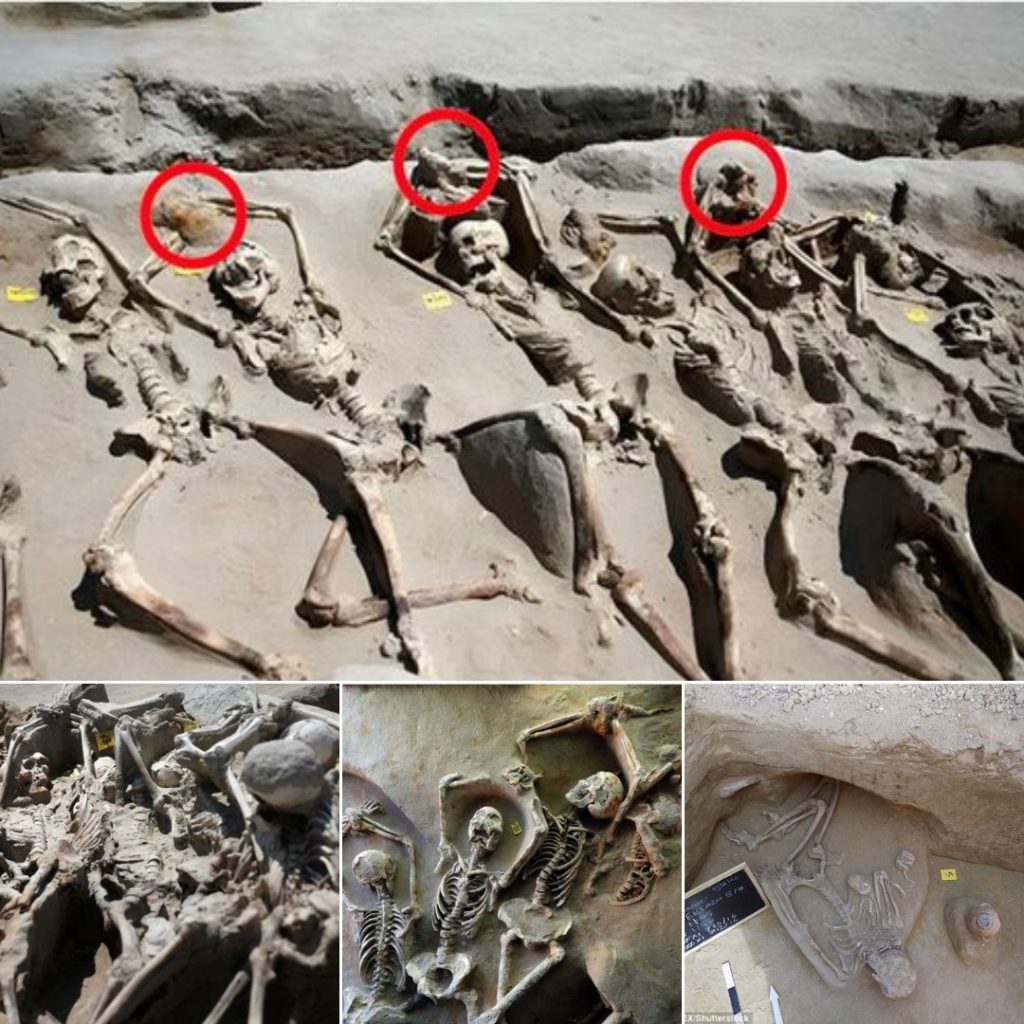In the vibrant and historically rich city of Athens, where contemporary life unfolds against the backdrop of ancient ruins, a chilling discovery has reignited interest in the city’s turbulent past. While constructing a national opera house and library in the Faliron Delta area, workers unearthed a mass grave unlike any seen before in modern excavations. Hidden beneath layers of sand and soil, the skeletal remains of at least eighty individuals—each bound in iron shackles—were revealed, offering a grim glimpse into a forgotten chapter of ancient Athenian history. This haunting find has captivated archaeologists and historians, provoking questions about who these people were, why they were executed, and what their deaths reveal about life—and death—in ancient Greece.

As excavations progressed under the guidance of Dr. Stella Chryssoulaki, the lead archaeologist at the site, it became clear that this was no ordinary burial. The individuals in the grave were all shackled, their wrists tied together with iron restraints, and their arms positioned above their heads. Yet despite the evident violence that marked their end, the manner in which they were interred was unexpectedly respectful. The skeletons were neatly arranged, laid out with care rather than dumped haphazardly. This level of burial organization led experts to believe that these were not criminals or slaves disposed of without thought, but perhaps men of some standing or importance who met a tragic fate.
Most of the individuals uncovered were young and in good health at the time of their deaths, further challenging initial assumptions that the grave might have contained war casualties or plague victims. The careful burial and the demographic profile of the deceased have led researchers to consider that they may have been political prisoners or individuals involved in a larger, dramatic historical event. One prevailing theory has captured widespread attention: that these men were followers of Cylon, a nobleman and Olympic champion who attempted to seize power in Athens in 632 B.C.
According to ancient accounts, Cylon’s attempted coup was bold and daring, but ultimately doomed. With the help of supporters, he tried to overthrow the existing government and declare himself ruler of Athens. The plan failed, and while Cylon managed to escape the wrath of the city’s authorities, his followers were not so fortunate. Historical sources describe how his supporters were captured and executed, although the specifics of their deaths were long lost to history—until perhaps now. The discovery of the shackled skeletons has led many to believe they could be the remains of these ill-fated rebels, bringing a once-murky historical episode into sharper focus.
The Faliron Delta necropolis where this grave was discovered has yielded many insights into life in ancient Athens. The site, unlike the more famous Kerameikos cemetery, contains the remains of everyday Athenians, from infants buried in ceramic pots to adults laid to rest in stone coffins. Dating from the 8th to the 5th century B.C., this burial ground offers a rare and unfiltered look at Athenian society across several centuries. It reveals how the living treated their dead, how burial customs evolved, and how societal status may have influenced one’s final resting place.
In total, more than 1,500 bodies have been unearthed at the necropolis, making it one of the most significant archaeological sites in the region. Each grave tells a story, and the mass grave of shackled skeletons tells a particularly compelling one. It is a story of ambition, betrayal, and punishment, set against the backdrop of a city grappling with political change and unrest.
As research continues, modern technology promises to provide even more answers. DNA analysis is expected to offer critical insights into the identities, familial connections, and origins of the deceased. Such information could confirm or challenge the theory that they were Cylon’s followers or reveal a completely different narrative lost to time. Dr. Chryssoulaki and her team hope to establish a museum on-site, allowing the public to engage with these discoveries firsthand. By preserving this find and presenting it within a historical context, future generations can learn not just about ancient Athens, but about the human experience through the ages.
These shackled skeletons, resting in the shadow of Athens’ gleaming modern skyline, are more than archaeological curiosities. They are a testament to the complexity of human history—the lives lived, the choices made, and the consequences endured. They offer a powerful contrast between the aspirations of a city striving for cultural excellence and the brutal realities of political ambition and repression.
One archaeologist poignantly remarked that a cemetery is “a first and last photograph in antiquity of those people that pass from life to death.” The Faliron Delta grave does indeed function as a kind of photograph—an unblinking snapshot capturing a moment of tragedy, a silent witness to the lives and deaths of those who came before us. Through the careful study of this site, we are reminded that history is not just about kings and battles, but also about the individuals whose stories, once lost, can be pieced together bone by bone, bringing the past to life once more.
In this way, the mass grave at Faliron Delta offers more than morbid fascination—it provides valuable lessons about power, justice, and memory. It challenges us to confront the darker chapters of history, to ask difficult questions, and to preserve the stories of those who can no longer speak for themselves. As Athens continues to build for the future, the voices of its past echo through these ancient remains, urging us never to forget.





